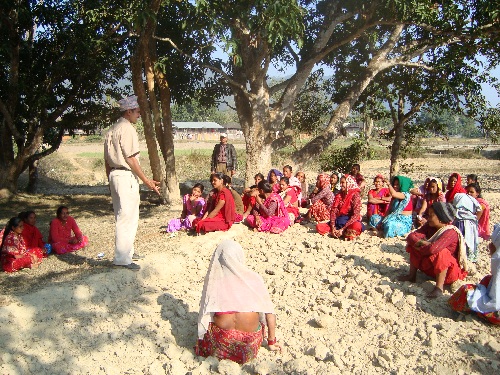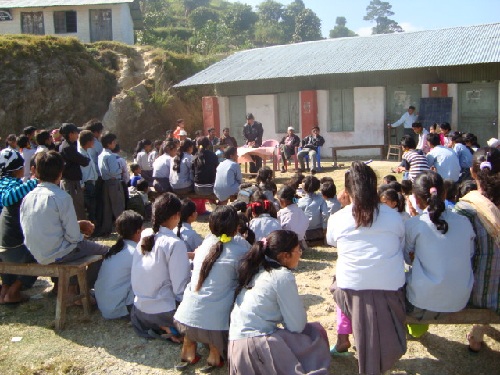Situated some 300km east of Kathmandu, Sindhuli is a remote district of Nepal where many villages are without access or means of transportation. It was one of the first districts attacked by the Communist Party of Nepal-Maoist (CPN-M) when they initiated their ‘People’s war’ in February 1996. During the 11 years of internal armed conflict, 14 people disappeared and 221 lost their lives in Sindhali (http://www.insec.org.np/victim/reports/district.pdf). I recently had the opportunity to visit the region, and to assess how far people there have been able to rebuild their lives and communities since the signing of the Comprehensive Peace Agreement (CPA) in November 2006.

Despite the efforts of local people, life is still dominated by an overall lack of even basic needs: no roads, no transportation, no new sources of income, no schools, and not even drinking water. Because many people live out of the lack of access for vehicles, many people are forced to hike up to two days for services and collect drinking water and fire wood by foot, having to cover several kilometres a day. Schools in particular are suffering severely under these conditions: Mud floors, lacking windows, blackboards, shabby furniture and hair-raising hygienic conditions are common. General healthcare is as problematic, due to a the lack of a hospital, which is substituted for by only few health centres run by mostly unqualified staff, chronically underequipped, and far from accessible.
Amidst this chaos, families as the nuclear cell of society are under constant threat. A visit to one of the local families reveals the widening gaps: The father suffers from tuberculosis, has to walk a whole day and travel by bus another one to get to the only TB-hospital in Nepal, while his son is not able to help him since he moved to Saudi Arabia as a labourer. This fate is typical for young people in the rural areas, most of whom leave the country and take on low-paid jobs in India or the Middle East, seeing no future for themselves in Nepal. There is now a widespread fear of society losing a whole generation of young people. On the other hand, and in defiance of reality, political parties – and most of all the CPN-M - keep trying to raise expectations about the future.
Socially, the district is caught up in both unresolved issues and a longstanding culture of violence which evolved from the years of internal armed conflict. The former is manifest in widespread gender- and caste discrimination, with low caste people being banned from using the same wells as higher class members. But even more obvious are the deep wounds left by the war, suddenly erupting as violent clashes among villagers, even over seemingly trivial issues.
However, there is a thin ray of hope for better life in the villages. Since the signing of the peace agreement, a number of dedicated civil society- and community based organisations has been working on mitigating the climate of despair and violence. Their efforts are channelled through discussion and interaction programmes, awareness campaigns, workshops and trainings for villagers on peace, non-violence, dialogue, facilitation, mediation and negotiation, as well as the essential task of bridging the gap between state authorities and conflict victims. In addition, these activists are working on identifying the primary victims of the decade-long violent struggles and their actual needs for a return to a normal life.
In accordance with this “movement”, the people of Belghari Village Development Committee (VDC) took part in a one-day peace and human rights workshop, peacefully solving a Community Based Organsation (CBO) conflict concerning a financial transparency issue,, while workshop participants are now involved in creating awareness for issues of conflict and peace among their neighbours and family members.

In a similar manner, school teachers in Sindhuli district were provided with training on conflict, peace and human rights. As a result, 29 teachers have been actively solving problems and calling people’s attention to peace and human rights in their respected areas. In particular, they have been addressing the issue of caste discrimination, irrigation and pressing local issues.
These teachers were then enabled to train a number of students on human rights and peaceful methods of conflict resolution like mediation and negation, who were in turn able to reach out to their friends, to villagers and family members.
Although evidence of the peace activities’ anticipated effects is still rare, it is clearly noticeable that a majority of the villagers have rejected violence as a means for resolving disputes and conflicts. Moreover, people have started talking about peace and human rights - It seems like the long established culture of violence is gradually and slowly replaced by an emerging culture of peace, which, above all, calls for a sustainable and long term engagement.










